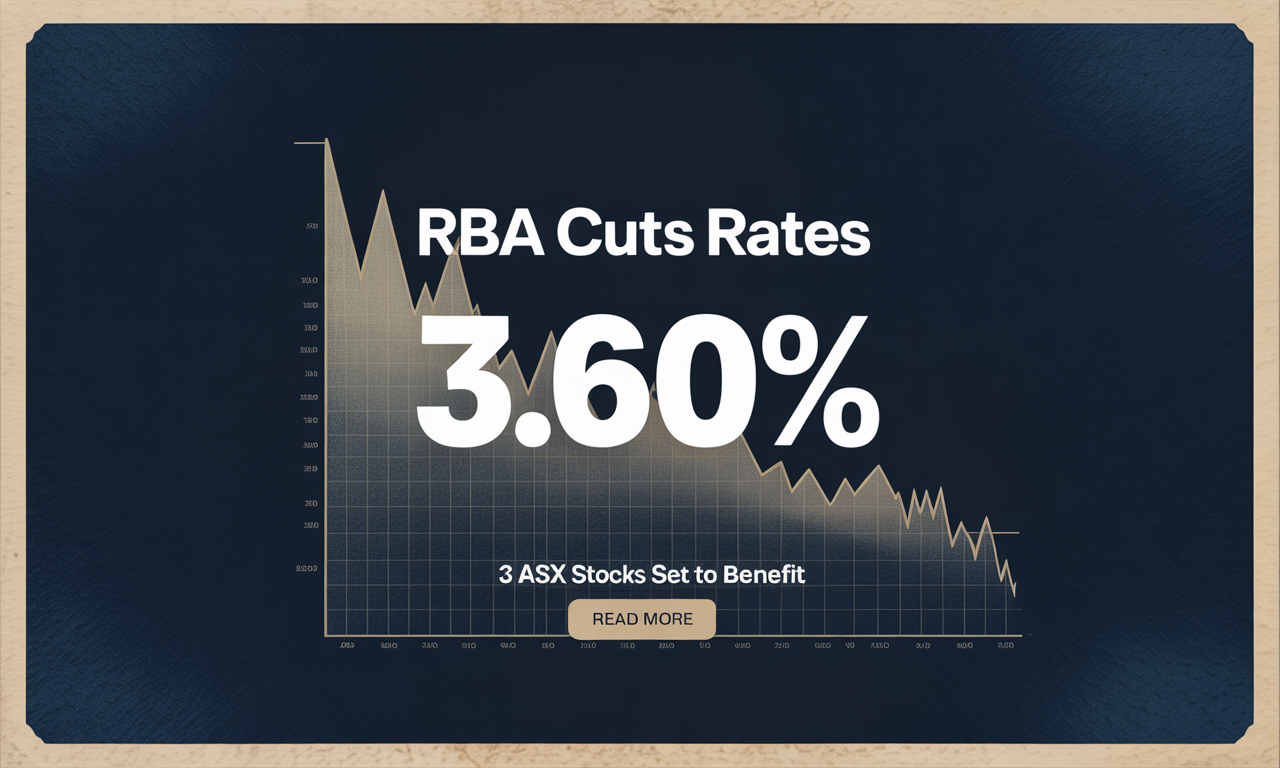The Reserve Bank of Australia (RBA) has cut the official cash rate by 25 basis points to 3.60%, marking its third rate reduction in 2025. The move reflects the central bank's concerns around a slowing economy, softening inflation and relative weakness in consumer demand. For investors, it signals a shift in the market environment that could favour interest-rate-sensitive assets.
RBA Cuts Rates to 3.60%: Why These 3 ASX Stocks Could Soar as Borrowing Costs Fall?

RBA Cuts Rates to 3.60%: Why These 3 ASX Stocks Could Soar as Borrowing Costs Fall?
Date: 8 July 2025
ASRW Research
The Reserve Bank of Australia (RBA) has cut the official cash rate by 25 basis points to 3.60%, marking its third rate reduction in 2025. The move reflects the central bank's concerns around a slowing economy, softening inflation and relative weakness in consumer demand. For investors, it signals a shift in the market environment that could favour interest-rate-sensitive assets.
Why has the RBA Cut Rates Again?
The decision marks the third cash rate reduction by the RBA this year, bringing the cash rate down from 4.35% in January to 3.60% today. The decision follows a clear trend of moderating inflation, softer economic data, alongside increased global trade risks, stemming from proposed tariffs by the US on major partners.
Domestically, the RBA has flagged slowing consumer expenditure, rising unemployment, and below-trend business investment as key areas of concern. With inflation stabilised at the target range, the RBA now has greater flexibility to support growth. This rate cut is designed to lower borrowing costs, support job creation, and increase private sector investment.
Lower interest rates aim to stimulate economic activity by encouraging households to spend and businesses to invest. For equity markets, this environment creates opportunities in sectors where businesses tend to have large debt books.
The Impact of Falling Interest Rates on the ASX
A lower cash rate affects Australian equity markets in several ways. First, it reduces borrowing costs for companies and consumers. Businesses with significant debt benefit from reduced interest payments, which can improve cash flows & profitability. Property owners with variable mortgages also experience some relief, reducing necessary spending and increasing discretionary budgets.
Second, falling interest rates make fixed-income assets such as term deposits and bonds less attractive. This often leads investors to increased allocations to equities, especially those offering strong growth potential.
Third, sectors that rely on stable cash flows and long-term assets typically see increased investor interest. Real estate, infrastructure and utilities are common beneficiaries. These companies often carry high debt loads, and when interest rates fall, their cost of capital declines, improving margins and supporting future investment or dividend growth.
Top Stocks to Watch: DXI, GOZ and APA
Our research team has identified three ASX-listed stocks that may be well-positioned to benefit from lower interest rates: DXI Property Group (ASX: DXI), Growthpoint Properties Australia (ASX: GOZ), and APA Group (ASX: APA).
These companies operate in real estate and infrastructure sectors that typically outperform when borrowing costs decline.
Dexus Industria REIT (ASX: DXI)
Sector: Real Estate
DXI is a real estate investment trust (REIT) that owns and manages a diversified portfolio of industrial and commercial properties across Australia. The trust focuses on assets with high occupancy rates and long lease terms, which generate consistent rental income.
A lower cash rate benefits DXI in two key ways:
1. It reduces interest expenses on its debt, improving cash flow and therefore distributable income.
2. It is likely to improve the net asset value of DXI's property portfolio, given the typical inverse correlation between interest rates and property prices.
Growthpoint Properties Australia (ASX: GOZ)
Sector: Real Estate
Growthpoint owns a $5 billion portfolio of office and industrial properties located across Australia. The company has a strong track record of delivering stable income returns and actively manages its balance sheet to ensure financial flexibility.
Lower borrowing costs also help GOZ in a couple of ways:
1. Falling interest rates improve GOZ’s distributable income by reducing interest expenses on its debt, thereby increasing cash available for distribution to unitholders. This supports the sustainability and potential growth of future payouts.
2. Lower capitalisation rates in a declining rate environment typically lead to higher valuations for GOZ’s property portfolio, strengthening its balance sheet and providing additional capacity for reinvestment or strategic acquisitions.
APA Group (ASX: APA)
Sector: Infrastructure and Utilities
APA Group owns and operates an extensive portfolio of gas pipelines, energy transmission assets, and renewable energy projects across Australia. Its revenue is predominantly derived from long-term, inflation-linked contracts with energy retailers and industrial customers.
APA benefits from falling interest rates due to:
1. APA’s capital-intensive infrastructure portfolio, which requires ongoing investment in pipelines and energy assets, is often funded through debt. As such, its earnings are sensitive to changes in interest rates, making it a key beneficiary of a lower cost of capital environment.
2. With a substantial debt book, declining interest rates reduce borrowing costs, which enhances earnings and strengthens its interest coverage ratio. This supports the sustainability of APA’s distributions in the long run, while also providing headroom for future growth investments.
Which Sectors Benefit Most from Rate Cuts?
• Several sectors tend to outperform during periods of falling interest rates. These include:
• Real Estate: REITs such as DXI and GOZ typically benefit from lower borrowing costs and rising asset values.
• Infrastructure: Capital-intensive businesses like APA with contracted revenues and large debt levels see improved margins.
• Consumer Discretionary: Lower mortgage repayments can boost household spending, though the benefits are uneven across the sector.
Conversely, some sectors may experience headwinds. Banks, for example, could see net interest margin (NIM) compression as the spread between deposit and lending rates narrows. Insurance companies and investment firms that rely on interest income may also see earnings pressure.
Investor Takeaways
The RBA’s third rate cut of 2025 underscores a changing macroeconomic backdrop. Slowing inflation and weaker consumer activity have prompted the central bank to ease monetary policy, providing support for both the housing market and the broader economy.
For equity investors, this environment creates opportunities. Sectors like real estate, infrastructure and utilities are likely to remain in focus. Stocks such as DXI, GOZ and APA could be well placed to benefit from lower interest expenses and positive asset revaluations.
While risks remain, including global trade tensions and soft consumer confidence, the overall outlook for interest-rate-sensitive stocks is improving. Investors should consider adjusting portfolios to take advantage of these structural tailwinds.
Our friendly team is here to help.
If you have any questions or feedback about our service, please feel free to contact us.








